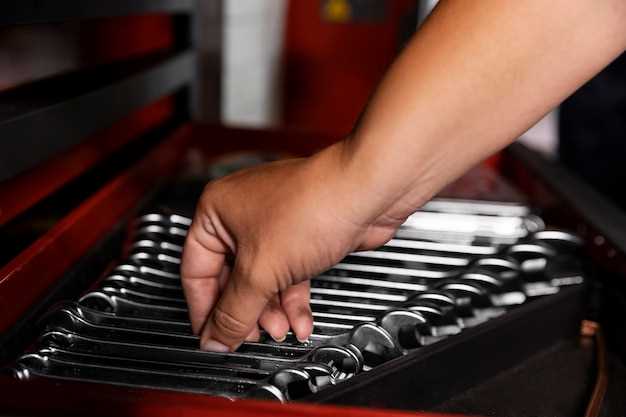
Keeping your Toyota in optimal condition requires diligent care of various components, and one of the most crucial elements is the air filter. The air filter plays a vital role in ensuring that your engine receives clean air for combustion, promoting efficiency and performance. Regularly checking and replacing this filter can enhance your vehicle’s fuel economy and overall longevity.
Over time, the air filter accumulates dirt and debris, which can impact engine performance. A clogged filter restricts airflow, causing the engine to work harder and potentially leading to increased wear and tear. Therefore, understanding how to properly check and replace your Toyota’s air filter is essential for achieving an efficient and reliable driving experience.
In this guide, we will walk you through the step-by-step process of inspecting your air filter and replacing it when necessary. Whether you’re a seasoned car enthusiast or a novice, this information will empower you to take control of your vehicle’s maintenance and ensure that your engine operates smoothly with clean, filtered air.
Identifying Symptoms of a Clogged Air Filter in Your Toyota

A clogged air filter can significantly impact your Toyota’s engine performance and overall efficiency. Recognizing the symptoms early can help prevent further damage and ensure proper care for your vehicle. One of the most common signs is a noticeable decrease in acceleration. If your Toyota struggles to gain speed when you press the gas pedal, a blocked filter may be restricting airflow to the engine.
Another symptom is reduced fuel efficiency. If you notice that you are filling up more frequently without any other explanation, the air filter could be impeding optimal combustion. Additionally, a dirty filter can cause the engine to misfire or run roughly, leading to an uneven idle or hesitations during acceleration.
Pay attention to the check engine light as well; it may illuminate when the engine management system detects issues related to airflow or fuel mixture due to a clogged filter. Lastly, unusual sounds from the engine, such as backfiring or sputtering, can also indicate a problem with the air filter. Regular maintenance and timely replacement of the air filter are essential for keeping your Toyota running smoothly.
Step-by-Step Guide to Inspecting and Replacing Your Engine Air Filter
Maintaining your vehicle’s engine is crucial for optimal performance, and inspecting the engine air filter is an essential part of this care. Follow this guide for an effective inspection and replacement process.
Step 1: Locate the Air Filter
Open the hood of your Toyota and locate the air filter housing. This is typically positioned near the engine and is secured by clips or screws.
Step 2: Remove the Housing Cover
Carefully detach the housing cover by releasing the clips or unscrewing the fasteners. Ensure not to damage any components during this process.
Step 3: Inspect the Filter
Once the cover is removed, take out the air filter. Examine it for dirt, debris, and potential damage. A clean filter will appear light-colored and free of large particles.
Step 4: Determine the Filter’s Condition
If the filter is discolored, excessively dirty, or shows signs of wear, it is time for a replacement. Generally, engine air filters should be replaced every 15,000 to 30,000 miles, depending on driving conditions.
Step 5: Install the New Filter
Align the new filter with the housing. Ensure it fits snugly in place without forcing it. Proper installation is crucial for optimal engine performance.
Step 6: Reattach the Housing Cover
Once the new filter is secured, replace the housing cover. Make sure all clips are fastened or screws are tightened to avoid any air leaks.
Step 7: Final Check
Before closing the hood, double-check that everything is properly installed. A secure air filter ensures that your engine receives clean air, enhancing efficiency and longevity.
Regular inspection and replacement of your engine air filter not only contribute to your vehicle’s performance but also reflect good maintenance care. Make this task part of your routine vehicle checks.
Choosing the Right Replacement Air Filter for Your Toyota Model

Selecting the appropriate air filter for your Toyota is crucial for maintaining optimal engine performance. The air filter plays a vital role in ensuring that clean air enters the engine, which directly affects fuel efficiency and power output.
When choosing a replacement air filter, first consult your owner’s manual to identify the specific filter compatible with your Toyota model. Different models may require specific dimensions and filtering capabilities. Using the correct filter will help maintain the engine’s longevity and performance standards.
Consider the type of air filter you wish to use. OEM (Original Equipment Manufacturer) filters are designed specifically for your Toyota and often provide the best fit and filtration efficiency. Alternatively, aftermarket options are available, which can vary in quality and filtering performance. Ensure that any aftermarket filter meets or exceeds industry standards.
Additionally, pay attention to the material of the filter. Paper filters are the most common and effectively trap particles; however, they may need to be replaced more frequently. Foam and cotton filters can offer better airflow and longer service intervals, but they may require special cleaning and maintenance.
Lastly, consider the environment in which you typically drive. If you frequently drive in dusty or polluted areas, investing in a high-capacity air filter that captures more contaminants might be beneficial. Regularly inspecting and replacing your Toyota’s air filter will not only improve engine performance but also lead to better fuel efficiency and lower emissions.




